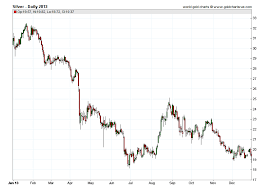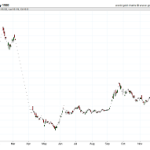The year 2013 was a tumultuous one for the silver market, marked by significant fluctuations and trends that impacted investors and traders alike. The price of silver started the year at a high of $32.23 per troy ounce in January, only to experience a sharp decline to a low of $18.61 per troy ounce in June.
This volatility persisted throughout the year, with silver prices experiencing significant shifts in response to various factors affecting the global economy. Understanding the silver price data of 2013 is crucial for investors and traders seeking to make informed decisions about this precious metal.
In this article, we will explore the various factors that impacted silver prices in 2013, such as global economic trends, geopolitical tensions, and supply and demand dynamics. We will also analyze the fluctuations and trends that defined the market, using data-driven analysis to provide a comprehensive overview of this important period for the silver market.
2013 Silver Market Overview
The silver market overview provides an analysis of the fluctuations and trends in the prices of silver throughout 2013. The prices of silver were determined by global demand and mining production. The LBMA silver price auction, forex prices, and daily silver price data available from various sources, including SD Bullion, provide insight into the market trends and fluctuations.
Global demand for silver was a significant factor in determining the fluctuation of silver prices in 2013. Silver is a precious metal used in various industries, including electronics, jewelry, and silverware. The demand for these industries and investment purposes determines the prices of silver.
On the other hand, mining production also influences the price of silver. The increase or decrease in mining production affects the supply of silver, which ultimately affects the prices. Understanding these factors helps to analyze the trends and fluctuations in the prices of silver in 2013.
Factors Affecting Silver Prices
Various factors have a significant impact on the value of silver, including global economic conditions, industrial demand, geopolitical events, and changes in supply and demand dynamics.
The industrial demand for silver plays a crucial role in the determination of its price. Silver is used in manufacturing a variety of products, including electronics, solar panels, and medical equipment. Therefore, any fluctuations in the industrial production and manufacturing sectors can have a significant impact on the demand for silver, which, in turn, can affect its price.
Geopolitical events also play a crucial role in the determination of silver prices. Political instability, wars, and conflicts can lead to significant fluctuations in the prices of silver. For instance, any escalation of geopolitical tensions can lead to a rise in silver prices as investors seek safe-haven assets. Similarly, a resolution of geopolitical conflicts can lead to a decrease in silver prices as risks associated with the market decreases.
Hence, investors and traders need to keep a close eye on geopolitical events as they can significantly affect the value of silver.
Analyzing Silver Price Trends
Analyzing the factors that influence the value of silver can provide insights into its market performance. One important aspect of this analysis is volatility analysis. The price of silver is known for its volatility, which can be attributed to various factors such as changes in demand and supply dynamics, economic and political factors, and market speculation.
Traders and investors often look at historical price data to identify patterns and trends in the market and make informed decisions about buying or selling silver. By studying the fluctuations in silver prices over time, investors can gain a better understanding of the market dynamics and make more informed investment decisions.
Demand-supply dynamics are another key factor that affects silver prices. The demand for silver comes from various industries, including the electronics, automotive, and healthcare sectors. The supply of silver is primarily influenced by mining activity, which can be affected by factors such as technological developments, political instability, and environmental regulations.
Understanding the demand-supply dynamics can help investors anticipate future price movements and make informed decisions about buying or selling silver. Overall, analyzing the trends and fluctuations in silver prices is critical for investors seeking to maximize returns and minimize risks in the precious metals market.
Frequently Asked Questions
How does the price of silver in 2013 compare to other years?
Silver price trends in 2013 were relatively lower compared to the years 2011 and 2012, with an average price of $23.79 per ounce. However, it was higher than the years 2008 to 2010, suggesting a fluctuation in the market. Market comparison shows that silver prices are influenced by various factors such as global economic conditions, industrial demand, and geopolitical tensions.
What is the current demand for silver in the market?
The current demand for silver in the market is driven by various factors such as industrial demand, investment demand, and global economic conditions. Silver market trends indicate investment opportunities in silver as a safe-haven asset, particularly during times of economic uncertainty.
How does the price of silver compare to other precious metals like gold and platinum?
Investment opportunities vary among precious metals. Market analysis shows gold and platinum have consistently outperformed silver in recent years. Data-driven decisions should prioritize long-term gains over short-term fluctuations.
What are some common uses for silver in industry and manufacturing?
Silver is used in various industrial applications such as electronics, medical instruments, and solar panels. The demand for silver in these industries has increased, while the silver supply has been limited, leading to a rise in prices.
How does the global political and economic climate affect the price of silver?
The price of silver is influenced by global geopolitical instability and monetary policies. As uncertainty increases, investors tend to seek safe-haven assets such as precious metals, causing prices to rise. Monetary policies such as interest rate changes and quantitative easing can also impact silver prices.





